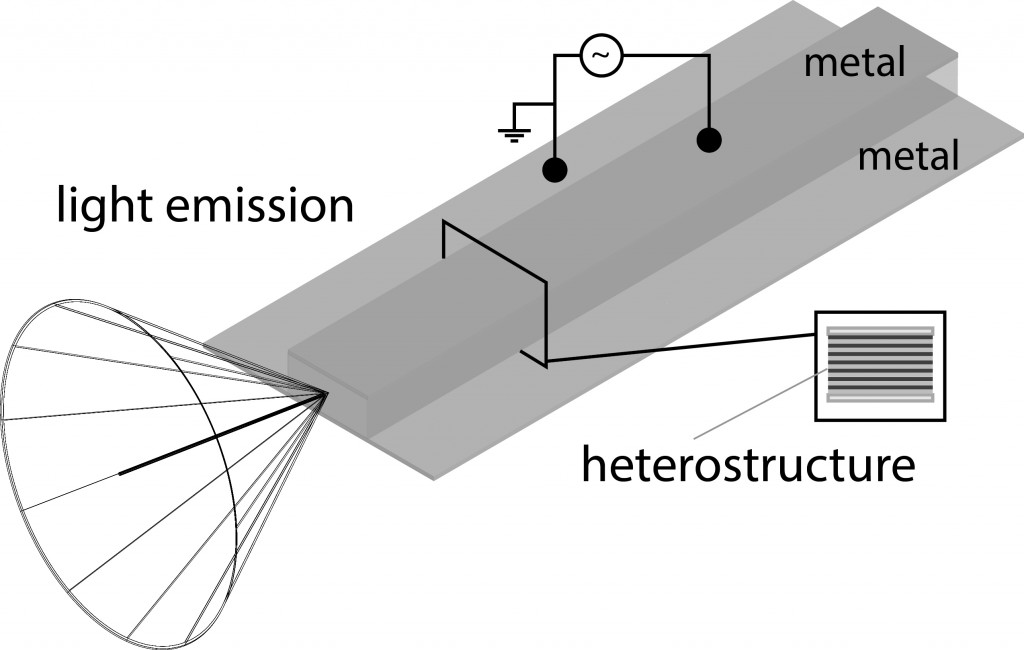Here we present the main approaches to develop optomechanical quantum cascade lasers.
The idea of having a macroscopic mechanical oscillating element to frequency-stabilize a laser cavity in a feedback scheme has been exploited since the 1980’s. Moreover, external, actuated mirrors have been widely employed for frequency tuning. The natural questions which arise within the project are: can we embed the mechanical resonator within the laser cavity itself ? Can we use a mechanical resonator to realize stabilization and frequency tuning in a THz quantum cascade laser ? SouLMan is aiming at answering these questions. In the following, you can find a more specific description of the scientific challenges of the project as well as our personal approach to address them.
Back to basics: confining light in a THz quantum cascade laser (QCL)
THz wavelength ranges around hundreds of microns. The active heterostructures used for lasing, on the other hand, have a thickness of tens of microns, limited by stress-induced cracking. Therefore, the only way to efficiently confine light within the active region is to employ double-metal waveguides, in which light propagates through surface plasmons. Being tightly confined by the metal layers, the optical fields are weakly interacting with elements placed outside the laser waveguide, making it hard to act along the ridge via mechanical elements. Moreover, the out-beam is strongly diverging adding difficulty for the realization of self-mixing feedback schemes.

For these reasons, we aim at devising mechanical resonators embedded in the plasmonic cavity itself, starting from “LC-like” THz resonators. Further, by miniaturizing mechanical mirrors, we can place them very close to the laser output facet and get an efficient output feedback and control of the laser properties. In the following, more details are reported about these tasks.